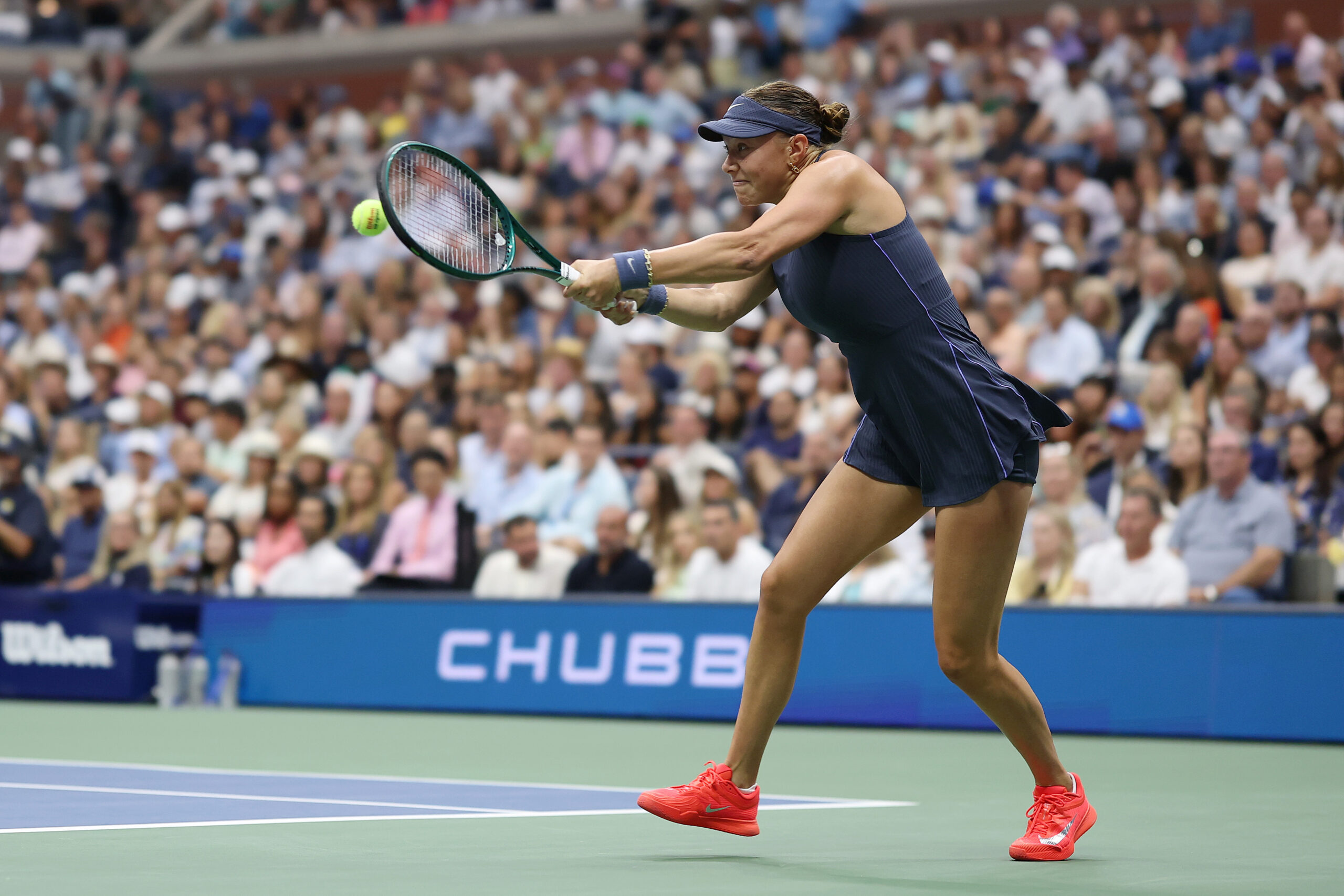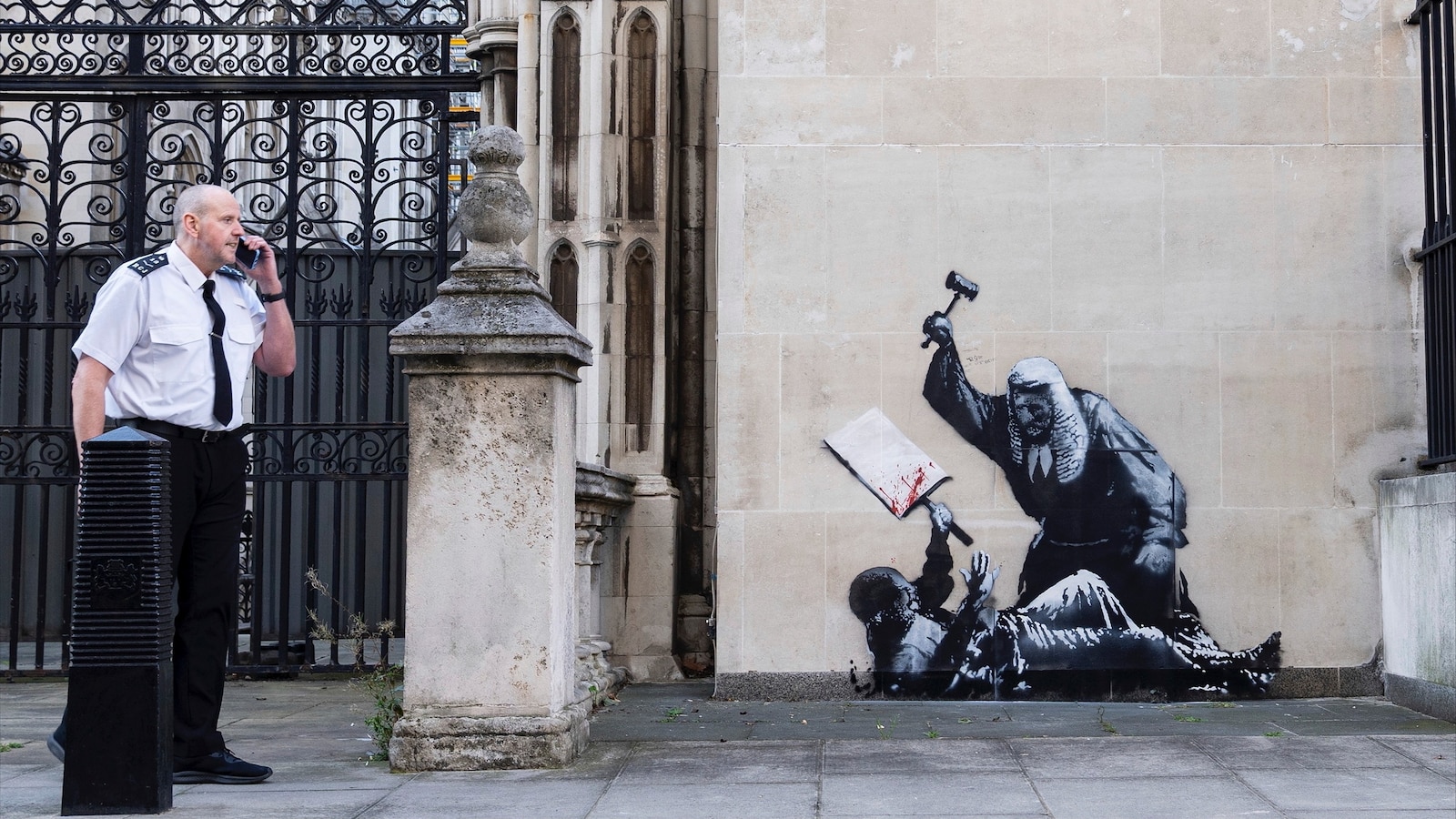The 2025 Grand Slam season is in the books, and each major crowned a different champion. At the US Open, Aryna Sabalenka shook off narrow losses at the year’s first three majors to defend her title and collect a fourth Grand Slam trophy. The victory keeps the World No. 1 ahead of Wimbledon champion Iga Swiatek at No. 2 and Roland Garros winner Coco Gauff at No. 3 in the latest PIF WTA Rankings.
Just below the Top 3, which remain intact, is a player mounting one of the sport’s most remarkable comebacks. Amanda Anisimova reached her second straight Grand Slam final, highlighted by a quarterfinal win over Iga Swiatek — the same opponent who had handed her a 6-0, 6-0 defeat in the Wimbledon title match. The victory erased that sting and propelled Anisimova into the Top 5 for the first time, climbing five spots from No. 9 to No. 4.
Fourteen months ago, Amanda Anisimova was ranked No. 176 and had just fallen in Wimbledon qualifying while returning from a mental health hiatus. Now, at 24, she’s a two-time major finalist with a place secured among the game’s elite.
Osaka returns to Top 20; Vondrousova, Krejcikova back in Top 50
Anisimova wasn’t the only comeback player who made waves in New York. Former World No. 1 Naomi Osaka reached her first Grand Slam semifinal since winning the 2021 Australian Open, and notched her first Top 5 win at a major along the way (over Gauff in the fourth round). Osaka returned from maternity leave at the start of 2024 and was back in the Top 100 by July.
Between October 2024 and August 2025, Osaka plateaued, with her ranking floating between No. 42 and No. 60. But last month, alongside new coach Tomasz Wiktorowski, the 27-year-old hit her stride. She reached the Montreal final ahead of the US Open. She has now won 11 of her past 13 matches. After 10 months of little ranking movement, Naomi Osaka has needed only two tournaments to climb 35 spots. She rose another 10 places this week to No. 14, her first time back in the Top 20 since January 2022.
Another pair of Grand Slam champions, Marketa Vondrousova and Barbora Krejcikova, are also on the way back up after missing significant chunks of the past year with injuries. Both made the quarterfinals in New York and both return to the Top 50 this week. Vondrousova leaps 24 places to No. 36, and Krejcikova 22 places to No. 40.
Vondrousova, sidelined six months in 2024 and another three this year after shoulder surgery, dropped to No. 165 in June. Barbora Krejcikova, out the first half of 2025 with a back injury, was ranked No. 80 as recently as last month.
Second-week runs boost Alexandrova, Li, Bucsa, Townsend
Ekaterina Alexandrova, Ann Li, Cristina Bucsa and Taylor Townsend all reached the fourth round of the US Open — for both Li and Bucsa, it was the first time they had made the second week at any major.
- Alexandrova, who has now reached the last 16 at the last three Grand Slams, climbs one place to a new career high of No. 11.
- Li jumps 12 places to No. 46, returning to the Top 50 for the first time since January 2022. In April 2023, the American slumped out of the Top 200, but she returned to the Top 100 last October after reaching the Merida final. Li, 25, has added another two tour-level finals this year, in Singapore and Cleveland.
- Bucsa, 27, upset Elise Mertens en route to the fourth round and leaps 33 places to No. 62. The Spaniard is just six places beneath the career high of No. 56 she set in January 2024.
- Six years after notching her first career Top 5 win over Simona Halep en route to the 2019 US Open fourth round, Townsend did it again. The 29-year-old upset Mirra Andreeva — her third career Top 5 win — to reach the second week of a major for the second time. She’s up 27 places to No. 112.
WTA 125 champions Eala, Erjavec, Chwalinska on the rise
Three WTA 125 champions were crowned in the second week of the US Open.
- Fresh from a first-round upset of Clara Tauson at the US Open, which made her the first Filipina to win a Grand Slam main-draw match, Alexandra Eala took her momentum to her first career WTA 125 title in Guadalajara. The 20-year-old climbs 14 places to No. 61.
- Until last week, Veronika Erjavec’s career-best season had been focused around the Slams, where the Slovenian had compiled an 11-4 record (including a defeat of Marta Kostyuk at Wimbledon) compared to 12-15 outside the major tournaments. That changed as the 25-year-old collected her first career WTA 125 title in Changsha, a result that lifts her up 19 places to a new career high of No. 119.
- In Montreux, Maja Chwalinska scored a first-round upset of home hope and No. 1 seed Jil Teichmann — then rode that momentum all the way to the title, her second WTA 125 trophy following Florianopolis 2024. The 23-year-old Pole leaps 43 spots to No. 134.
Other notable rankings movements
Clara Tauson, +2 to No. 12: Dubai finalist Tauson is also up to a new career high despite falling in the US Open first round.
Jaqueline Cristian, +7 to No. 43: Before this year, Cristian had never gone beyond the second round of a Grand Slam. In 2025, the Romanian has made the third round at three of them, including the US Open — where she was the only player to take a set from Anisimova before the final. Cristian rises to a new career high.
Laura Siegemund, +8 to No. 44: The 37-year-old German knocked out a Top 20 seed at a Grand Slam tournament for a third time this year at the US Open, defeating Diana Shnaider en route to the third round. Siegemund returns to the Top 50 for the first time since February 2021.
Tereza Valentova, +19 to No. 77: For the second time this year, Valentova qualified for a Grand Slam and reached the second round, where she faced a Top 10 seed. At the US Open, the 18-year-old Czech held a 5-2 second-set lead, and four set points, against Elena Rybakina before falling. She’s up to a new career high this week.
Caty McNally, +7 to No. 94: Former No. 54 McNally returns to the Top 100 for the first time since October 2023 after reaching the US Open second round.
Priscilla Hon, +20 to No. 106: Nine years after making her Grand Slam main-draw debut at the 2016 Australian Open, Hon made the third round of a major for the first time at the US Open. The 27-year-old Australian is up to a new career high.
Panna Udvardy, +16 to No. 118: Hungarian former No. 76 Udvardy reached her sixth career WTA 125 final last week in Guadalajara.
Janice Tjen, +19 to No. 130: The 23-year-old qualified for the US Open to make her tour-level debut, then upset Veronika Kudermetova in the first round to become the first Indonesian to win a Grand Slam match since Angelique Widjaja at Wimbledon 2003. Tjen, who was unranked 15 months ago on graduating from Pepperdine University, is up to a new career high after compiling a 101-14 record since June 2024.
Alina Charaeva, +35 to No. 159: 2020 Roland Garros junior runner-up Charaeva reached the final round of US Open qualifying and then the Changsha WTA 125 semifinals. The 23-year-old moves up to a new career high.
Maria Timofeeva, +31 to No. 160: 2023 Budapest champion Timofeeva continued her resurgence by reaching the Changsha WTA 125 final last week. The 21-year-old was ranked No. 250 just seven weeks ago.
Alina Korneeva, +30 to No. 163: Korneeva, who defeated Mirra Andreeva in the 2023 Australian Open girls’ final but who has suffered a series of injuries since, captured the Leiria ITF W50 title last week. The 18-year-old was sidelined between February and September 2024, then again between January and June this year.
Miriam Bulgaru, +32 to No. 168: The 26-year-old Romanian is up to a new career high after winning 15 of her past 17 matches, including a run to last week’s Vienna ITF W75 final.
Emerson Jones, +18 to No. 180: The 17-year-old Australian (and the highest-ranked 2008-born player) reached the final qualifying round for the second straight major at the US Open and is up to a new career high.
Tyra Caterina Grant, +24 to No. 208: The second-highest ranked player born in 2008 is Italian 17-year-old Grant, who’s also at a new career high this week after reaching the Bytom ITF W50 final two weeks ago.
Lina Gjorcheska, +43 to No. 239: The highest-ranked player in North Macedonian history, Gjorcheska has won 13 of her past 15 matches and reached three ITF finals in a row over the past month. The 31-year-old claimed the trophy in the third of those last week in Slobozia.
Kayla Day, +76 to No. 342: Former No. 84 Day reached the Guadalajara WTA 125 semifinals last week, notching her first Top 100 win since 2023 over Emiliana Arango in the quarterfinals.
Lilli Tagger, +46 to No. 347: Roland Garros junior champion Tagger reached the Vienna ITF W75 semifinals on home soil last week. The 17-year-old Austrian is up to a new career high.
Noma Noha Akugue, +89 to No. 349: 2023 Hamburg finalist Noha Akugue won the Oldenzaal ITF W50 title two weeks ago.
Jana Kovackova, +70 to No. 572: Ahead of winning the US Open girls’ doubles title with older sister Alena, 15-year-old Jana won her second ITF title of the year in Monastir. She’s the highest-ranked player born in 2010 with a pro record of 24-7, and she’s up to a new career high this week.
Anna Pircher, UNR to No. 871: The 15-year-old Austrian enters the rankings after reaching the Vienna ITF W75 semifinals in just her second professional event.
Polina Skliar, UNR to No. 1,031: The 14-year-old Ukrainian also enters the rankings this week after making the Kaltenkirchen ITF W15 final two weeks ago. Skliar is the third-youngest player on this week’s ranking list.









